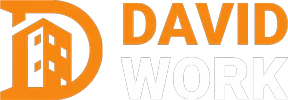The contractor is nearly done with the basement finishing in your home in Utah. You’re excited to regain the space again for your personal use. It’s been home to your small business venture until not everyone can fit in the space anymore. This now takes us to your next challenge and current pre-occupation. The team grew from three then to eight, and right now, there are almost a hundred employees.
Different teams have been established. You are now in a bigger office. Business is booming, and it’s not a rare occasion that there is chaos every week, which by anyone’s account would certainly impact your business’s profitability.
The easy way of coordinating and communicating and of doing things efficiently while you were still operating underneath that space in your house is now difficult to achieve. How can you improve the efficiency and productivity of employees in the office? This is now one of your main challenges.
Here are a few things to consider:
How It Hurts
One estimate suggests that between 20% to 30% of annual revenue will account for losses because of inefficient processes in the office. This means that if you generated $10 million in revenue in one year, $2 to $3 million would have been the cost of your losses.
Another report breaks it down further. One of the most significant sources of inefficiency is the way knowledge is shared across teams or between employees. The report suggests that this inefficient knowledge sharing could be worth $47 million per year for a large-sized company. The report says, for example, that 6 out of 10 of the 1,000 employees surveyed expressed difficulty in accessing information critical to the performance of their duties.
What You Can Do

You certainly do not want to lose millions of dollars every year. Here are a few ways to improve efficiency:
- Breakdown the silo mentality. Business units or people operating in silos means that there’s zero to minimum interaction between and amongst the units and people. There’s no sharing of process, data, or information. Imagine a marketing team launching a campaign online without telling the IT team or the sales team. One approach is to create what is called a “single system of record” or SOR. For example, sales, marketing team, and even HR can utilize Salesforce to manage and share information.
- You’re not Superman. In your head, you know what needs to be done down to the very last detail to produce the best quality. You hired people because they are capable. If the broad strokes are clear, then delegate and trust that they will execute it according to expected results. Hovering over people’s shoulders to ensure that their doing it your way is a waste of everybody’s time.
- Finding the best fit. If you ask an introvert personality with very minimal socializing skills but who’s highly technical, to lead a project, don’t assume that the project will be a success because he or she is highly technical. Leading means communicating effectively, something that is lacking in many introverts. With your personnel resources, you probably won’t find the perfect fit all the time, but you need to try to find the best fit in terms of the tasks and employee skills.
- Use the necessary communication tools. There are now many collaboration tools (e.g., Slack, Base Camp, Asiana) that can be used to manage projects and track their progress. See what’s best for your company set-up.
Providing incentives are also one way to encourage higher productivity. More pointers are out there. But these main points will set you in the right direction.
